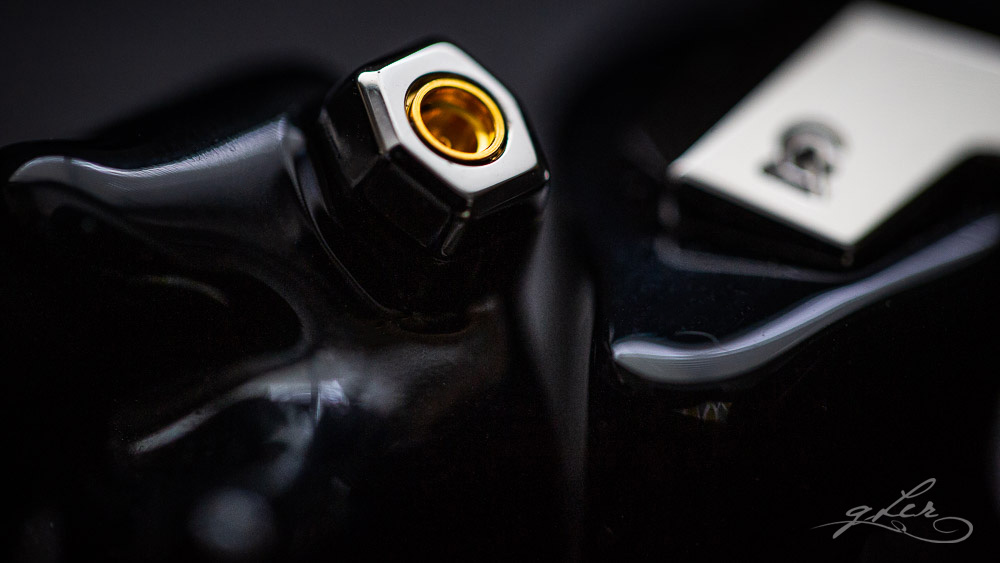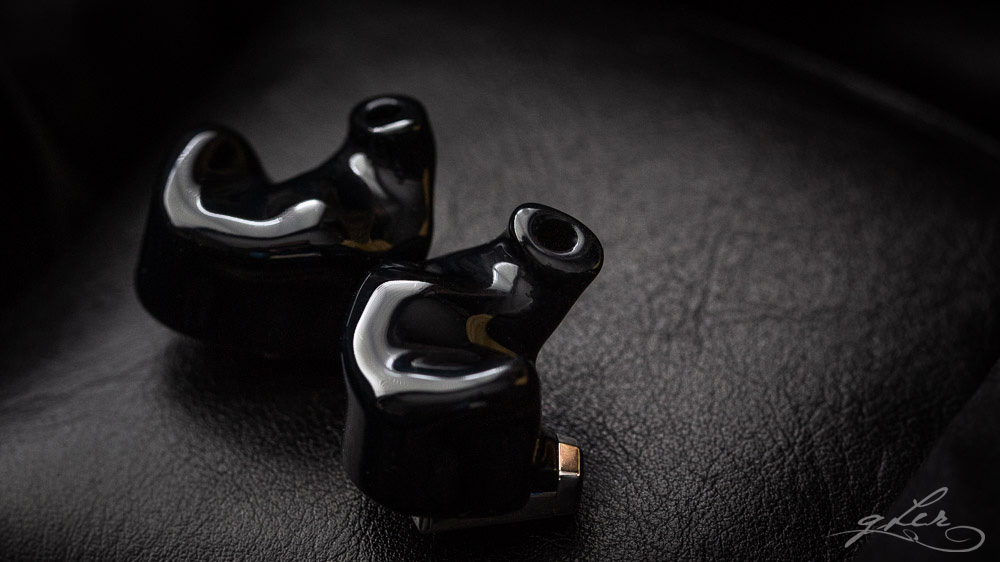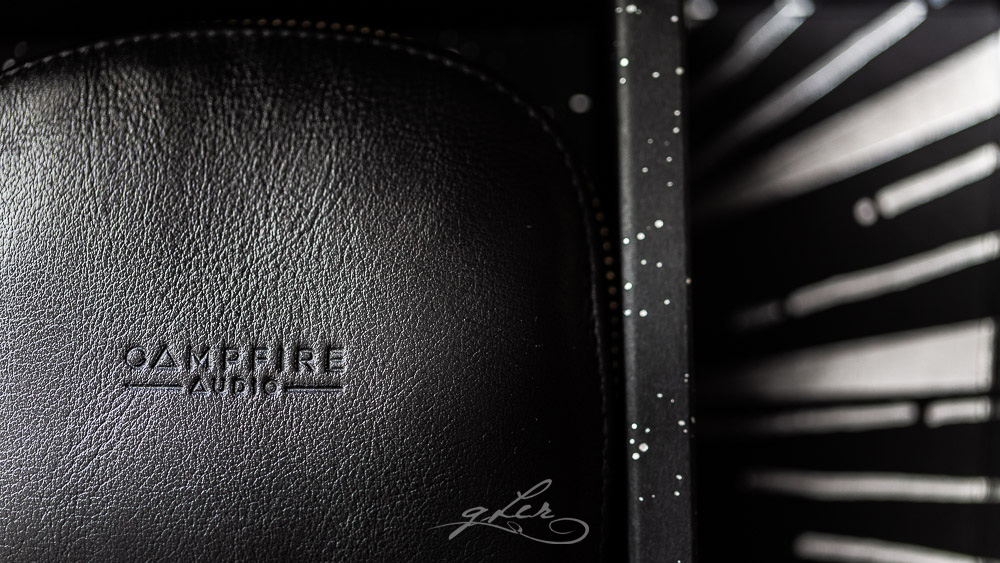Sound impressions
Supermoon has an advertised sensitivity of 94dB, so it’s theoretically not the most sensitive IEM. Practically, though, it needs about the same amount of power as the Sony IER-Z1R (104dB sensitivity) to reach the same volume level, so while I’d say it appreciates moderately powerful amplification, it doesn’t need it to reach a moderately high volume.
On the flipside, past Campfire IEMs like Andromeda have been notoriously over-sensitive, resulting in unwanted noise when connected to a source with even moderate amplification power. Thankfully Supermoon is rated at 15 ohms, and I’m yet to hear any hiss from any sources I’ve connected it to, including a desktop amp.
Another point to make is that my hearing is different to yours, and therefore my impressions should be seen as a guide rather than gospel. I have a moderate hearing dip at 4kHz, which means my sensitivity to forward upper mids and higher register vocals may be less than some, and conversely my sensitivity to low and mid-treble peaks a bit more pronounced. Wherever possible, I’ll refer to sound characteristics generically, so you can better relate them to what you’ll be hearing.
I tested Supermoon over a one month period, using a broad range of test tracks and albums, many of which I’ve referenced below. Listening notes were made using HiBy’s RS6 and Sony’s WM1Z DAPs set at moderate volume. All tests were done using the ‘stock’ Silver Litz 4.4mm balanced cable.

Tonality
Before I’d seen any graphs of Supermoon’s frequency response, my sense was that it displayed a soft ‘W’ or moderate U-shaped tonal curve, depending on the source and the music. That’s to say, bass was emphasised a fair bit above neutral, from the very lowest sub-bass to upper bass, before gently dropping into the mids then rising up evenly from centre to upper mids and tapering off into a moderately emphasised and extended treble.
Supermoon’s graph, however, suggests more of a V-shaped tonality, with bass emphasised above the midrange and two prominent treble peaks more or less in line with the midrange. However, even with my own slightly recessed upper midrange hearing, I don’t hear it that way. To me, vocals are forward enough and so well delineated and resolved that they don’t sound recessed, no matter what the graph suggests, and the treble doesn’t sound peaky or spiky with most of the music I listen to.
The point here is that, to my ears, Supermoon is not like any traditional V-shaped monitor I’ve heard before, and even though I’d characterise it as punchy and fun, there are no major frequency band scoops or excessive boosting going on. It’s also utterly coherent. As a single driver IEM, there’s no crossovers to deal with, no timbre shifts from different driver types, and no inconsistent speeds from different frequency bands. There’s no denying multiple drivers have their own benefits and strengths, but outright coherency usually isn’t one of them.
Bass
Let’s start here: if you enjoy a bass boosted IEM, you’ve come to the right place. Not only is Supermoon’s bass elevated, it’s done in a way that doesn’t beat the other frequencies into submission. I find bass emphasis leans towards the sub bass frequencies, where it extends almost infinitely low, but mid- and upper-bass are still very well represented. There’s zero midbass creep or bloom from what I’m hearing.
The sheer quality of Supermoon’s bass, however, is what sets it apart from many other excellent bass-focused monitors: it has a sublime combination of visceral punch, weight, electrostatic-like speed, and decay that surpasses some of the best dynamic driver bass. It doesn’t quite match the very best dynamic drivers for natural decay and timbre, but it has its own infallible character, easily out-resolving most dynamics I’ve heard, and making it unique among the current crop of top-tier IEMs.
When you hear a powerful sub-bass boom with Supermoon it feels like a depth charge set off in the ocean. You don’t hear it as much as feel it through your body, or in this case, through every ligament in your skull. Take the first few seconds of A Fine Frenzy’s Bomb in a Birdcage, an apt title given the sub bass bombs going off inside your head. James Blake’s Limit To Your Love is my go-to sub bass power test, and take my word for it, you’ll want to turn the volume down before wave upon wave of relentless sub bass washes over you from the 50 second mark.
Unlike many sub bass-leaning IEMs, Supermoon’s midbass is just as impressive. James Gillespie’s powerful electronic bass that, for me, defines his breakout hit What You Do, is a perfect example of midbass shock-and-awe. Meanwhile Supermoon is equally adept at recreating the very real kick drums in Brandi Carlile’s The Story, the classic intro drums to the Eagles Hotel California Live, and the many shades of drum in Babatunde Olatunji Stepping (the first track of his Circle of Drums DSD).
Interestingly the sheer speed of the bass means it doesn’t give the music a warm, romantic tilt, like many slower-tuned dynamic drivers tend to do. The bass and drums in Bon Jovi’s Runaway are faithfully reproduced as I imagine they were recorded, which is to say not overly bombastic. It also doesn’t overwhelm you with bass, unless your preference is set for much less bass than this in the first place, so the bass drops in Armin van Buuren’s Intense aren’t quite as intense as they would be with typical basshead monitors (and yet still verysatisfactory).
In short, Supermoon’s bass takes me back to my full-size headphone days, where the mighty Audeze LCD-3 was my pride and joy. It renders every facet of bass almost perfectly, with restrained power and delicate control, punching tremendously hard and deep when it needs to, and rumbling gently if that’s all the track calls for. It doesn’t flavour every track with bass, but where the bass is the focus, that’s what you’ll hear and feel. Supermoon is a bass connoisseur’s delight, and its bass delivery is, for me, one of several stars in its show.

Midrange
I hear Supermoon’s midrange as fairly linear and supremely resolving, with a well-defined and textured lower midrange (male vocals sound natural and sufficiently chesty), and a moderate rise to a healthy but not overly forward upper midrange and pinna gain.
My personal midrange focus is vocals, and primarily female vocals, and I find the timbre of female vocals almost spot-on to my liking here. This ranges from the sugary sweet: Alison Sudol in Bomb in a Birdcage and Heidi Talbot in Cathedrals being prime examples; to textured and emotive, like Brandi Carlile in The Story and Katie Pruitt in It’s Always Been You; to sultry and seductive, like Laufey in the live version of Fragile from her recently-released The Reykjavic Sessions.
It also takes in the sublimely emotive, like basically anything Lana Del Rey has ever sung (Yosemite from her Chemtrails Over The Country Club LP a great recent example) and, my current favourite, Ethel Cain, where I can point to almost any track on her breakthrough Preacher’s Daughter LP, my personal album of the year.
Male vocals are admittedly under-represented in my library, but those I regularly listen to sound about as lifelike as I’ve heard them. Mark Knopfler’s iconic vocal in Sultans of Swing is probably the best I’ve heard it, as is Ian Anderson’s in Budapest, and Roger Waters’ in What God Wants. Neil Diamond, another sentimental favourite of mine, delivers his heartfelt Hello My Friend with his trademark gravelly emotion.
Not once have I felt that Supermoon underplays or recesses either male or female vocals, but it can be temperamental when it comes to poor or compressed recordings. As much as I love Ethel Cain, her vocals are far from perfectly recorded, and I sometimes hear coarseness in her trailing breath. She’s not alone in this; Norah Jones, Jillette Johnson, Meiko, and even Lana occasionally mic their vocals too hot.
Whether that’s a result of Supermoon’s supreme resolution or unforgiving clarity in the upper midrange (and possibly lower-to-mid treble) I’m not sure. It’s not as rough as I hear it with some overly bright and mid-forward monitors, but it’s not as smooth or silky as Oriolus’s Traillii rendition, for example.
Instrument timbre is not really my field of expertise, I admit, but there’s absolutely nothing wrong with how I hear the piano in Daft Punk’s Within, or the guitar plucks in Nils Lofgren’s Keith Don’t Go. In fact, Supermoon is easily one of my favourite IEMs for instrumental music, be it real or synthesised.
Tool’s Fear Inoculum is a great example of the many good things Supermoon can do, and one of those is its midrange acuity. The track is filled to the brim with grinding electric guitars, centred vocals and a cacophony of synth effects and supporting instruments, and not once am I pulled away from the realism and tactility in Supermoon’s delivery.
If I have to be critical of anything here, Supermoon doesn’t have the warmest, wettest or fullest midrange I’ve heard by any measure. It’s not a dry delivery as such, but it edges closer to thin, especially on older rock songs like Boston’s More than A Feeling. I’ve also heard, admittedly only a handful of times, a hint of metallic glare in some upper range female vocals, but some reports of persistent metallic timbre are either wide of the mark, or just something I haven’t personally experienced.
Supermoon’s is an engaging sound, and one that I feel owes a lot to how realistically it renders vocals and instruments. It may not be the very best at doing this, but it’s far better than most that I’ve heard with the music I listen to. If you are a stickler for instrument timbral accuracy, you might find Supermoon skews more synthetic for you, but if you’re a lover of emotive vocals and a sound that lets you hear every detail in a vocal recording, this is unquestionably Supermoon’s strength.

Treble
There’s a difference between generous treble and harsh treble, and Supermoon’s is definitely the former. I’m particularly sensitive to sibilance in vocals, spiky zing in a string solo, and harshness in a cymbal strike, and not once have I encountered any of the above with Supermoon.
Having just finished listening to Max Richter’s second attempt at recomposing Vivaldi’s The Four Seasons, I can honestly say Supermoon renders the speed, texture and bite of the violin solos in Winter 1 exceptionally well, and it does even better with his first recomposition attempt in my opinion.
Def Leppard is another go-to litmus test for exuberant treble for me, and in Gods of War – one of the underdog tracks off their magna carta album Hysteria – Supermoon is super clean, even smooth in its cymbal crashes and snare splashes, with sibilance-free vocals to boot (not always the case with Joe Elliot’s recordings, I assure you).
Like bass, Supermoon’s treble is very well extended, at least right up to where my hearing trails off at around 12kHz to 14kHz. There’s bite to some recordings, and I warn those who think they can get away with playing overly bright poorly mastered recordings. Do that, and Supermoon will find you, and it will kill you.
This is not a consistently smooth treble, coming off as quite ethereal, and lending to some of the thinner notes the upper midrange can sometimes suffer from. But it also rewards great recordings with crisp, clean, and highly detailed highlights, with plenty of air where the track calls for it.
Some IEMs leave me wincing with the melee of cymbal strikes in Dire Strait’s Sultans of Swing, but with Supermoon I can’t get enough of them. In fact, in my last listen it’s all I could do but to focus on the crispy stick hits, with their natural decay sounding ever so lifelike.
As much as it can highlight the bright with finesse, it can also lend a delicate touch to string instruments, the iconic violin riff at 0:54 in Anna Nalick’s alternate version of Wreck of the Day is clean and sweet, and the violins are easy to pick up and follow in the track even as elements get busier later on.
As someone who only really notices the treble when its harsh, grainy or corrosive, I’ve only ever paid attention to Supermoon’s treble for what it was doing right. This is treble filled to the brim with texture, and more detail than I sometimes care to hear. But, as with everything else, Supermoon is not forcing its treble detail on me, and I find myself listening to tracks on shuffle for hours on end without fatigue as a result.

Continue to technicalities…




One Response
Quite superb as always.